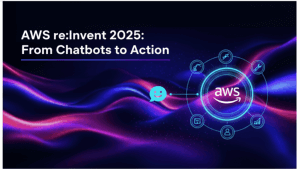The telecommunications industry is undergoing a fundamental shift—one that moves beyond infrastructure build-out to focus on service enablement, developer ecosystems, and monetization. Central to this transition is the rise of network APIs, which aim to expose valuable network capabilities—once locked in proprietary silos—to developers via standardized, open interfaces.
During a recent AnalystANGLE interview, I had the opportunity to speak with Shkumbin Hamiti, Head of Network Monetization Platform at Nokia, about the evolving network API landscape, Nokia’s strategy, and the critical role that developer experience will play in unlocking value from programmable 5G infrastructure.
The Promise of Network APIs in a 5G Era
As 5G networks become more cloud-native, disaggregated, and software-defined, operators are increasingly positioned to expose core network functions—like quality of service (QoS), location data, and device insights—to third-party developers in a secure and consumable way.
Industry efforts such as the GSMA Open Gateway, TM Forum Open APIs, and the Linux Foundation’s CAMARA project all aim to simplify developer access to these capabilities and foster interoperability. These initiatives are setting the stage for telcos to participate more actively in digital ecosystems and move beyond their traditional connectivity role.
Hamiti noted that this is not the first attempt by telecom operators to open their networks, referencing earlier GSMA-led initiatives over a decade ago. However, he believes the market is in a fundamentally different place today. “We are encouraged this time,” he said. “5G by design allows these capabilities to be exposed. And the ecosystem momentum is real.”
From Legacy to Programmability: Cultural and Technical Shifts
A key factor enabling this evolution is the ongoing transformation of telco infrastructure—from fixed appliances to cloud-native, API-friendly architectures. This architectural shift, combined with advances in automation and orchestration, enables operators to offer network services in real time and on demand.
But as Hamiti emphasized, the biggest challenge isn’t technology—it’s mindset. “Telcos must think ‘developer first,’” he explained. “That means simplifying access, removing jargon, and presenting services in a way developers understand. We can’t expect developers to know 3GPP or deep telco protocols.”
Security, compliance, and regulatory complexity also present hurdles—particularly when opening access to core network functions. But these concerns can be addressed with strong governance models and intent-aware exposure frameworks.
Real-World Use Cases Across Industries
While the network API market is still in its early days, real-world use cases are already emerging across industries:
- Transportation: Mission-critical applications like remote vehicle operation and autonomous driving require guaranteed QoS and ultra-low latency. At MWC Barcelona, Nokia showcased a remote-driving demo where a car in Malaga was controlled from Barcelona using APIs to ensure high-bandwidth, stable connectivity over Telefónica’s 5G network.
- Drones and Airspace Automation: Nokia and partners demonstrated a drone flying in German airspace controlled from Belgium, using Deutsche Telekom’s network APIs for location tracking and service-level assurance.
- Financial Services: APIs can enhance fraud prevention by cross-verifying a user’s phone location with a transaction point or identifying SIM swaps. These capabilities can strengthen authorization logic and reduce transaction risk.
- Media and Entertainment: Live event broadcasting over 5G networks requires reliable, high-bandwidth connectivity. APIs offering QoS on demand can ensure content creators have the network performance they need, exactly when and where they need it.
These use cases demonstrate the horizontal applicability of network APIs, from physical safety to digital trust. They also highlight the importance of offering APIs with developer-friendly abstractions and global reach.
Network as Code: Simplifying Developer Access
To address this, Nokia launched its Network as Code platform, designed to unify access to APIs across operators and regions. The platform acts as a two-sided marketplace, connecting telco network capabilities with enterprise developers via a simplified, cloud-native interface.
Key features include:
- Global abstraction layer: Nokia works operator-by-operator to expose local network assets but presents a global experience to developers, reducing fragmentation.
- CAMARA-compliant APIs: Nokia currently offers 14 APIs across four domains—QoS management, network insights, device insights, and anti-fraud capabilities.
- AI-enhanced developer tools: The platform includes intelligent assistants that help developers generate code, access documentation, and simulate use cases in real time.
This emphasis on usability aligns with what Hamiti described as “radical simplicity” for developers—lowering the barrier to entry while maintaining network integrity and operator policy controls.
Scaling with Rapid: Lessons from API Ecosystems
To further enhance its platform, Nokia recently acquired Rapid, a Silicon Valley-based company known for its comprehensive API marketplace and developer experience platform. With over 4 million developers using the Rapid ecosystem, the acquisition gives Nokia a direct channel to promote and refine network APIs while applying best practices from more mature API ecosystems.
Hamiti noted that most of these developers have never interacted with network APIs—representing a massive untapped opportunity. By combining Rapid’s API lifecycle management, monetization tools, and analytics with Nokia’s network exposure stack, the company now offers one of the most complete platforms for operator and developer engagement.
OurANGLE
The network API market represents one of the most compelling opportunities for telcos to monetize 5G beyond traditional connectivity. But it will require more than technology—it will require ecosystem coordination, platform abstraction, and cultural alignment around developer experience.
Nokia’s approach with its Network as Code platform and Rapid acquisition demonstrates a pragmatic, developer-centric strategy. By abstracting complexity, ensuring API standardization, and enabling real-world use cases, Nokia is helping telcos participate in—and profit from—the next wave of network-enabled innovation.
As the market evolves, expect to see more collaboration between telecom providers, cloud platforms, and developers. Those that embrace openness, automation, and simplicity will be best positioned to transform their networks into programmable assets—fueling everything from safer transportation to smarter financial transactions.
For those looking for additional information on Nokia’s platform and developer resources, please visit their website.



